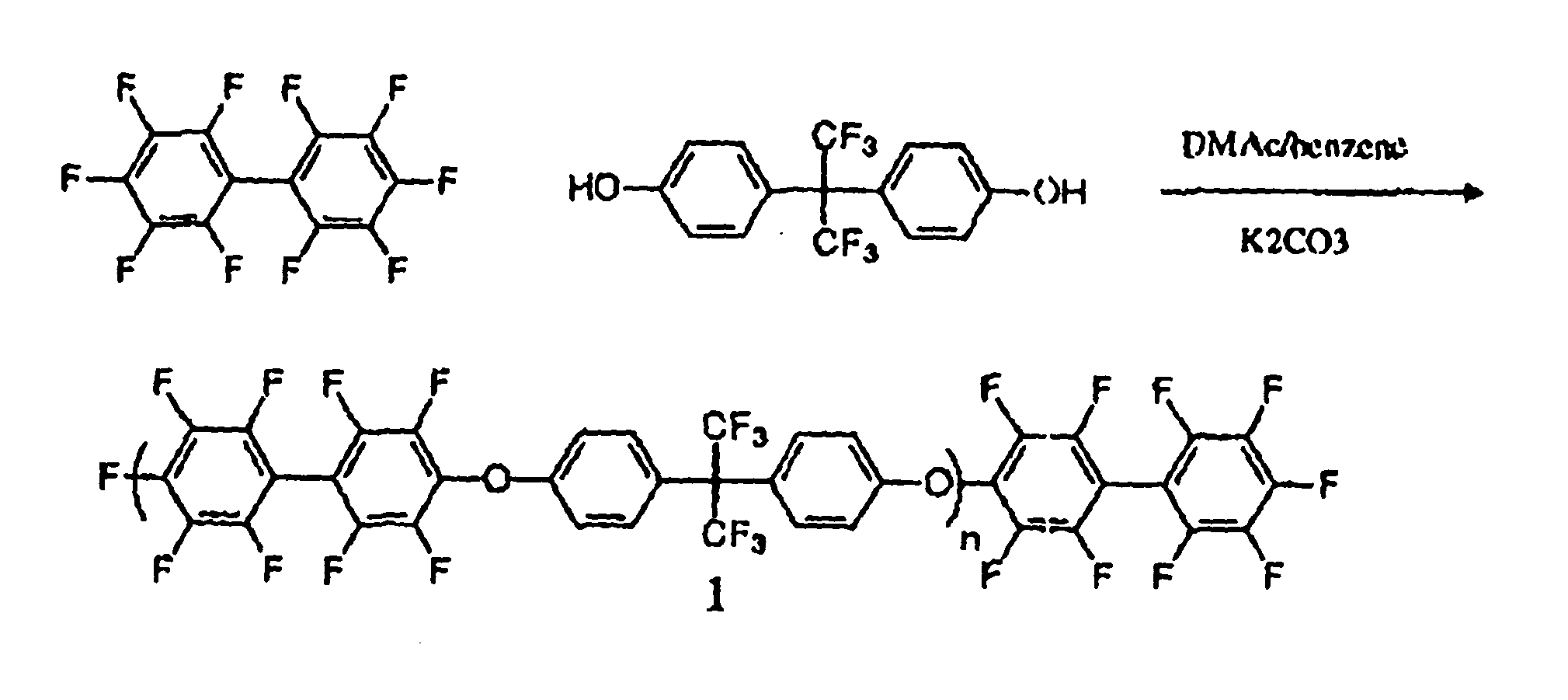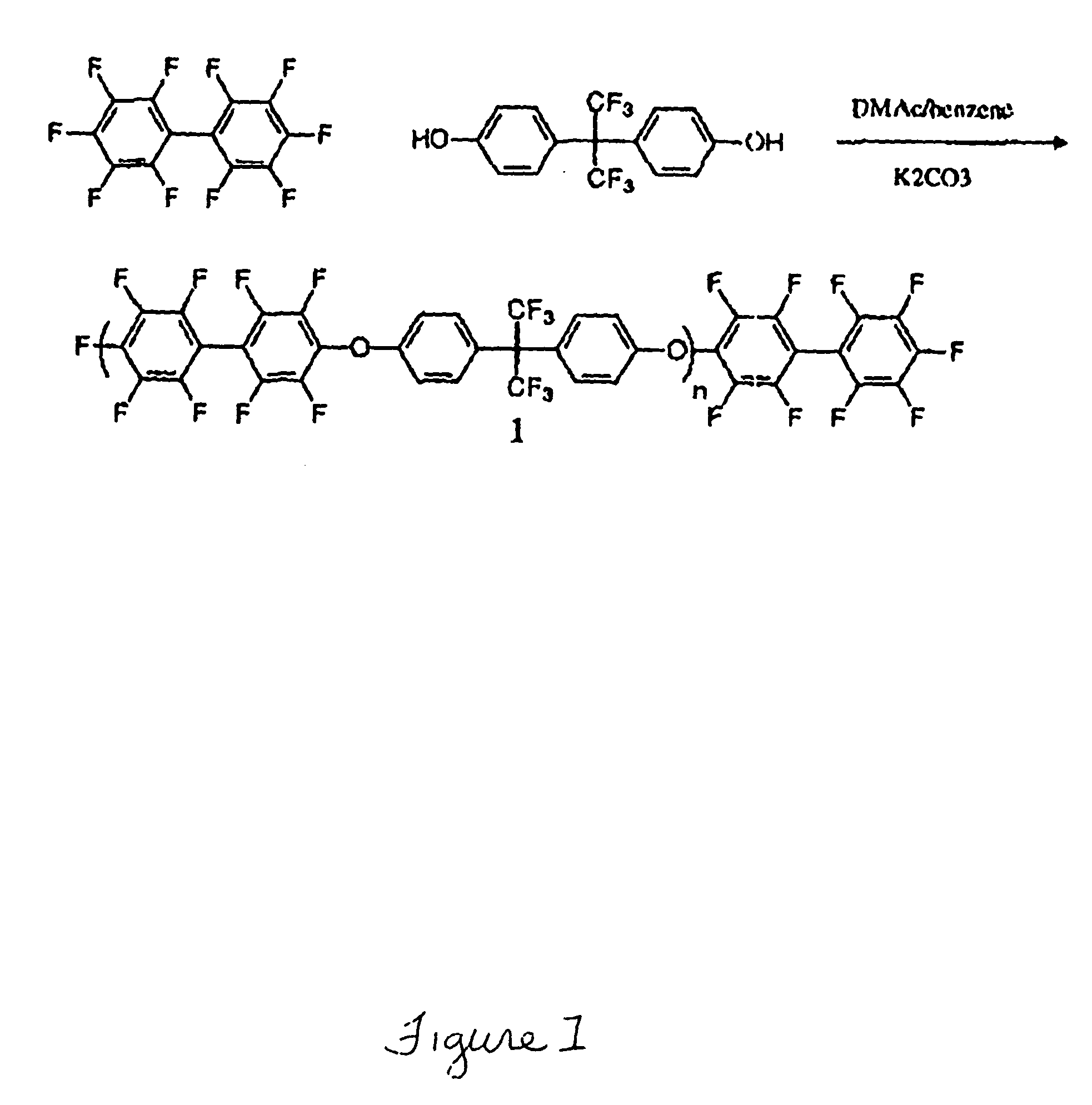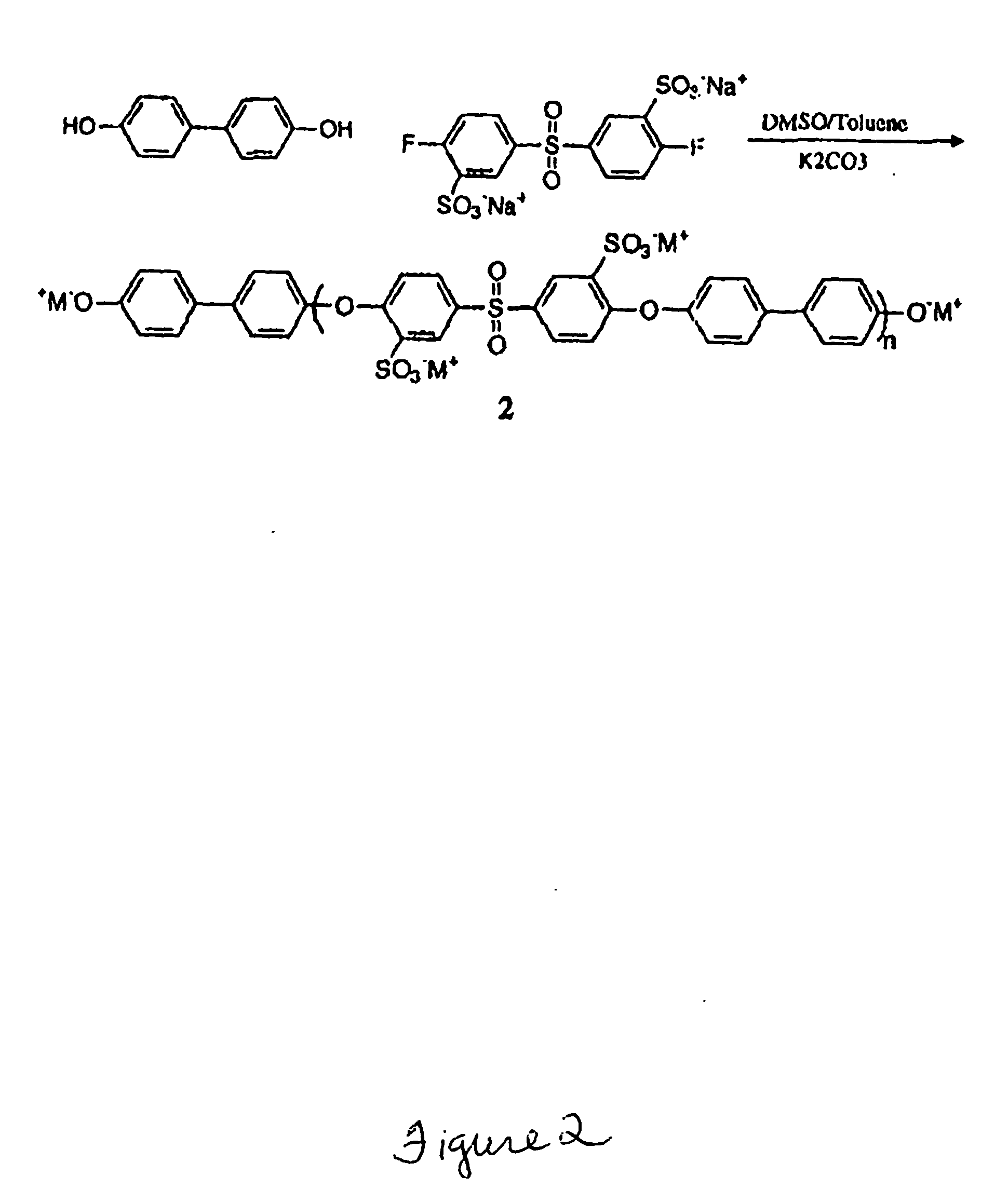Multiblock Copolymers Containing Hydrophilic Hydrophobic Segments for Proton Exchange Membrane
a proton exchange membrane and hydrophobic segment technology, applied in the direction of ion exchangers, non-aqueous electrolyte cells, electrochemical generators, etc., can solve the problems of low conductivity at low humidity or high temperature, low methanol permeability, and high cost of nafion®, etc., to achieve low methanol permeability, high proton conductivity, and easy production. easy and inexpensive
- Summary
- Abstract
- Description
- Claims
- Application Information
AI Technical Summary
Benefits of technology
Problems solved by technology
Method used
Image
Examples
examples
Experimental
[0037] Materials: All reagents were purchased from Aldrich and used as received unless otherwise noted. N-methyl-2-pyrrolidone (NMP), dimethylsulfoxide (DMSO) and N,N-dimethylacetamide (DMAc) were dried over calcium hydride, distilled under vacuum and stored under nitrogen before use. THF was dried and distilled over sodium. 4,4′Biphenol obtained from Eastman Chemical. The specialty monomer 4,4′-difluorodiphenylsulfone (DFDPS) was purchased from Aldrich and recrystallized from toluene. The sulfonated comonomer, 3,3′-disulfonated4,4′-difluorodiphenylsulfone (SDFDPS) was synthesized in-house from 4,4′-dichlorodiphenylsulfone (DFDPS) according to a method which is reported elsewhere.9 Decafluorobiphenyl was purchased from Aldrich Chemical Co. and dried under vacuum at 60° C. for 24 hours before use. 4,4-Hexafluoroisopropylidenediphenol (bisphenol AF or 6F-BPA), received from Ciba, was purified by sublimation and dried in vacuo.
[0038] Characterization: 1H, 19F and 13C NMR ...
PUM
| Property | Measurement | Unit |
|---|---|---|
| proton conductivity | aaaaa | aaaaa |
| temperatures | aaaaa | aaaaa |
| operating temperatures | aaaaa | aaaaa |
Abstract
Description
Claims
Application Information
 Login to View More
Login to View More - R&D
- Intellectual Property
- Life Sciences
- Materials
- Tech Scout
- Unparalleled Data Quality
- Higher Quality Content
- 60% Fewer Hallucinations
Browse by: Latest US Patents, China's latest patents, Technical Efficacy Thesaurus, Application Domain, Technology Topic, Popular Technical Reports.
© 2025 PatSnap. All rights reserved.Legal|Privacy policy|Modern Slavery Act Transparency Statement|Sitemap|About US| Contact US: help@patsnap.com



